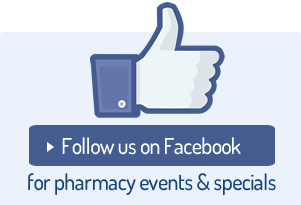Heart-healthy environments
World Heart Day takes place on 29 September every year. It is the World Heart Federation’s (and the world’s) biggest platform for raising awareness about cardiovascular disease (CVD).
 This World Heart Day, the focus is on creating heart-healthy environments. It emphasises for people to understand what they can do to fuel their hearts and power their lives. Just a few simple steps such as eating more healthily, cutting down on alcohol and stopping smoking can improve your heart health and your overall wellbeing. By ensuring that people are able to make heart-healthy choices wherever they live, work and play, World Heart Day encourages us all to reduce our cardiovascular risk, and promote a heart-healthy planet for those around us.
This World Heart Day, the focus is on creating heart-healthy environments. It emphasises for people to understand what they can do to fuel their hearts and power their lives. Just a few simple steps such as eating more healthily, cutting down on alcohol and stopping smoking can improve your heart health and your overall wellbeing. By ensuring that people are able to make heart-healthy choices wherever they live, work and play, World Heart Day encourages us all to reduce our cardiovascular risk, and promote a heart-healthy planet for those around us.
A healthy heart is essential for healthy living. Heart attack and heart disease are the world’s biggest killers – over 17 million people each year die from cardiovascular disease. The most common cardiovascular diseases include coronary heart disease (e.g. heart attack) and cerebrovascular disease (e.g. stroke). Coronary heart disease (also called ischaemic heart disease) is caused by the build-up of fatty material called plaque on the inside walls of coronary arteries. Plaque is mostly cholesterol.
Understanding warning signs and symptoms of a heart attack can be one of the most effective methods of preventing death from heart disease. Heart attack warning signs and symptoms can vary from person to person. They can also vary from one attack to another in the same person. Signs and symptoms may not always be sudden or severe. Signs and symptoms include dizziness, shortness of breath, cold sweats, and nausea/vomiting. You can have these symptoms for weeks before a heart attack actually occurs.
You may also feel:
- Discomfort or pain in the centre of your chest. This can feel like heaviness, tightness or pressure. The discomfort may radiate to different parts of your upper body. Heart attacks do not always cause chest discomfort.
- Discomfort in your arm(s), shoulder(s), neck, jaw or back. You may have a choking feeling in your throat. Your arms may feel heavy or useless.
When a heart attack does occur, every minute counts. The lack of blood flow to the heart means the heart muscle begins to die within minutes of being starved of oxygen. The earlier the blocked artery can be opened and the blood flow restored, the greater the proportion of heart muscle that can be saved, and the greater the chance of survival. There is a small window of opportunity to minimise heart damage. The best result is achieved when people receive emergency treatment within 90 minutes of their first signs and symptoms. After two hours, the damage to the heart muscle may be irreversible and can cause permanent disability.
The Heart Foundation warns that many people lose their lives because they take too long to call the ambulance. They aim to make people understand that hospital and emergency services staff can administer treatments that help reduce heart damage.
Controlling key risk factors such as diet, physical activity, tobacco use, and blood pressure may reduce your risk for CVD.
Our local pharmacy is your health destination and can provide a range of products, medicines, services and advice to assist in preventing and managing heart disease. These include:
- Prescription medications and advice on medications.
- Health advice.
- Blood pressure monitoring.
- Services to help you lose weight and quit smoking.
Visit our local pharmacy today and find out what we have available.
In addition, you can get more information on heart disease and heart attacks from our Pharmacy's Self Care Fact Cards which include topics such as Warning signs of heart attack and High blood pressure as well as lifestyle topics such as Staying a non-smoker.
Reproduce PSA Health Column 28/9/16

